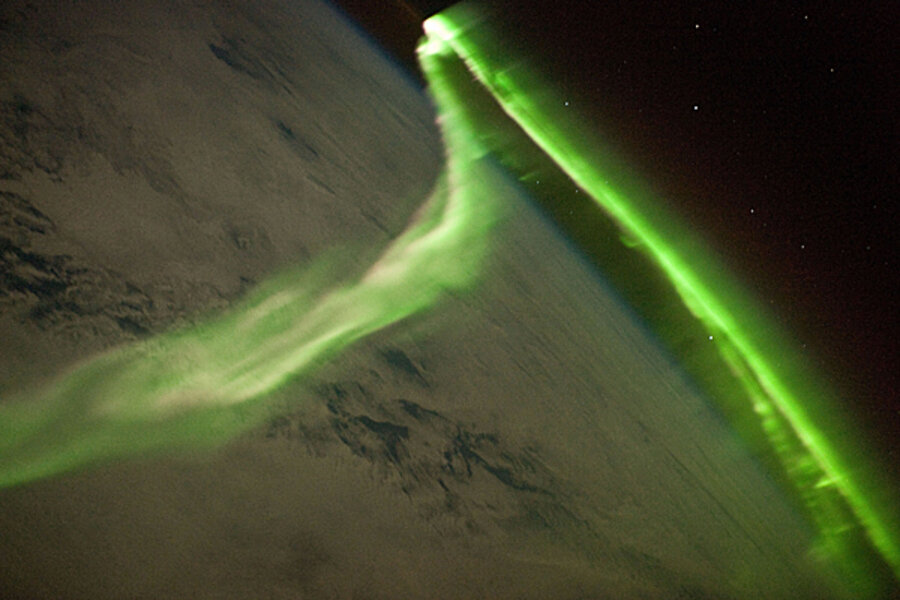Solar flare 2011: How a dazzling display can wreak electrical havoc
Loading...
As we were reminded this week, the sun is no placid sphere that uniformly radiates warmth. On the contrary, our star roils, churns, belches, and, every now and then – just to remind us who really runs things in this solar system – spits fire in our direction.
Just before 9 p.m. EST on Valentine's Day, a tremendous explosion on the sun's surface unleashed a wave of charged plasma that hurtled toward our planet at more than two million miles per hour.
The solar flare and its attendant torrent of solar wind – the biggest of its kind in four years – glanced off of the Earth's North Pole, warping the electric currents in our upper atmosphere and blacking out shortwave radio transmissions in southern China.
It could have been much worse. In March 1989, a blast of solar wind tripped circuit breakers on Hydro-Québec's power grid, leaving six million people without electricity for nine hours. Later that year, another solar eruption caused computer crashes that brought trading on Toronto's stock market to a halt.
And 1989 was a mere ripple compared to the solar tsunami of 1859, which saw the biggest disruption of the earth's magnetic field in recorded history. In September of that year, the sun threw a massive cloud of charged plasma our way, lighting up the night sky with auroras as far south as Havana. Telegraph wires shorted out, igniting papers and shocking telegraph operators.
The New York Times from that week carried this extraordinary exchange between telegraphists in Boston and Portland, Maine, who disconnected their batteries and worked directly from the current in the atmosphere.
Boston operator (to Portland operator): "Please cut off your battery entirely from the line for fifteen minutes."
Portland operator: "Will do so. It is now disconnected."
Boston: "Mine is also disconnected, and we are working with the auroral current. How do you receive my writing?"
Portland: "Better than with our batteries on. Current comes and goes gradually."
Boston: "My current is very strong at times, and we can work better without batteries, as the Aurora seems to neutralise and augment our batteries alternately, making current too strong at times for our Relay magnets. Suppose we work without batteries while we are affected by this trouble."
Portland: "Very well. Shall I go ahead with business?"
Boston: "Yes. Go ahead."
According to the Times, the telegraphs ran on nothing but electrified air for two hours.
This happened at the dawn of the electric age. Today, a comparable solar flare could devastate our infrastructure. A 2008 report by the National Academy of Sciences found that a major solar storm could cause twenty times the economic damage of hurricane Katrina.
As unforeseeable as solar flares may be, the sun itself follows a fairly predictable schedule, going from a solar maximum – a period with almost-daily plasma ejections – to a solar minimum and back, every 11 years or so.
The sun has been unusually quiet in the past decade, but NASA says that it is finally starting to wake up. According to the space agency, the next solar max will occur around May 2013.





